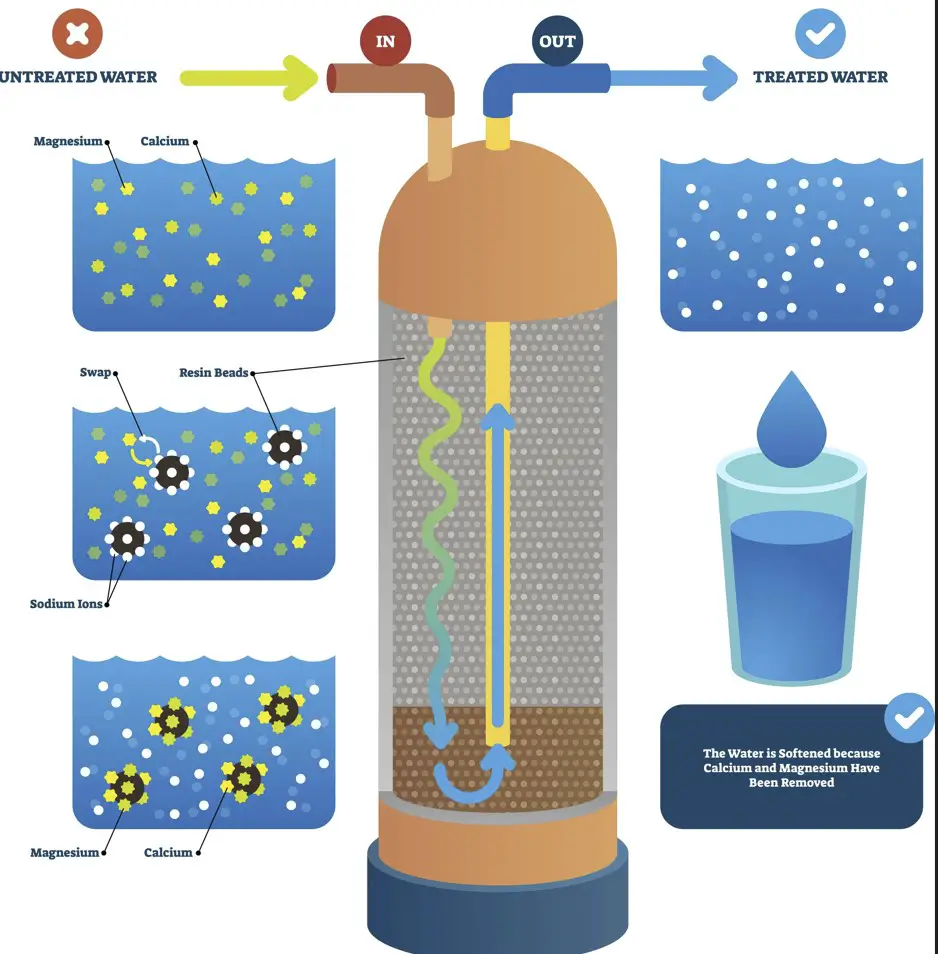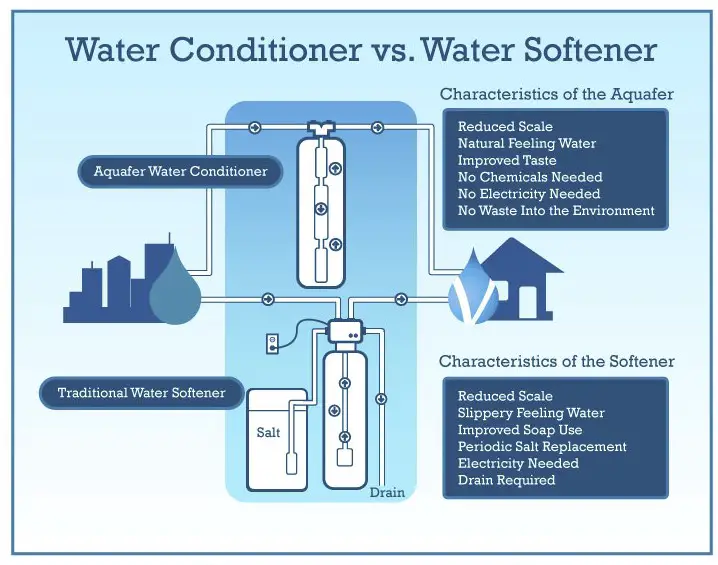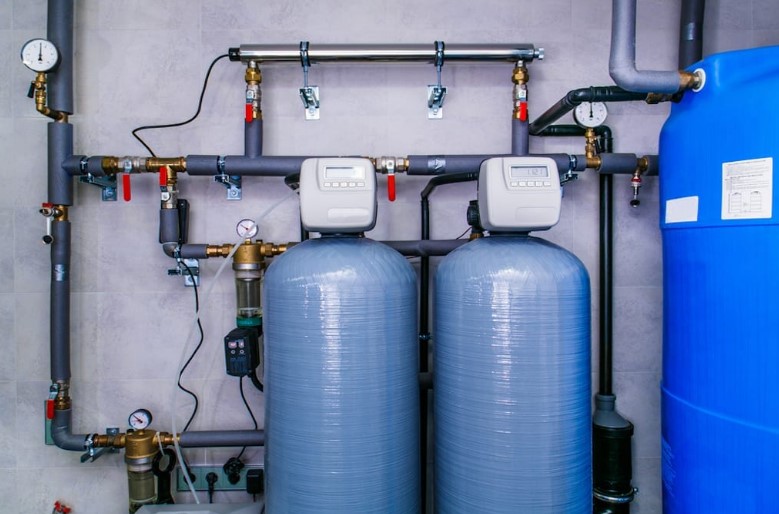Water quality in homes and industries is a crucial concern that often prompts the use of various treatment solutions. Among these, water softening and water conditioning are prominent methods employed to improve water characteristics for safer and more efficient use. Both terms are frequently used interchangeably, yet they entail different processes and outcomes.
Water softening primarily refers to the removal of minerals that cause water hardness, primarily calcium and magnesium, through a process known as ion exchange. In contrast, water conditioning involves a broader spectrum of treatments that modify the chemical structure of water to prevent scaling, manage bacteria, and improve taste and odor without necessarily removing the hardness minerals.
The significance of choosing the right water treatment method extends beyond just improving water taste or preventing scale build-up. It encompasses a range of benefits from extending the lifespan of plumbing and appliances to enhancing the overall healthfulness of the water. Each method uses distinct technologies and has different implications for water quality and usage.

Water Softening
What is Water Softening?
Water softening is the process aimed at reducing the concentration of calcium, magnesium, and certain other metal cations in hard water. These minerals cause the water to be hard, which can lead to various household problems and inefficiencies. Softening the water extends the lifespan of plumbing and increases the effectiveness of soaps and detergents.
How Softeners Work
The most common type of water softener is an ion-exchange unit. This process involves:
- Water Flow: Hard water enters a mineral tank.
- Ion Exchange: It flows through a bed of spherical resin beads coated with sodium ions.
- Exchange Process: As water flows through, the beads trap the mineral ions and replace them with sodium ions.
- Regeneration: When the beads are saturated with mineral ions, the system regenerates, flushing the beads with a salty brine solution to recharge them with sodium ions.
Benefits of Softened Water
- Appliance Lifespan: Reduces scale buildup in pipes and machinery, which can degrade appliances over time.
- Cleaning Efficiency: Soaps and detergents lather more effectively in softened water, leading to cleaner dishes and softer clothes.
- Energy Savings: Appliances like water heaters operate more efficiently, reducing energy consumption and costs.
Common Softening Methods
- Salt-based Ion Exchange: The most prevalent method, involving sodium or potassium ions replacing hardness ions.
- Salt-free Water Softeners: These condition water by crystallizing calcium but do not remove it, which still prevents scaling.
Softening Agents Used
- Sodium Chloride: Common table salt used in most ion-exchange softeners.
- Potassium Chloride: An alternative for those on low-sodium diets, used in the same manner as sodium chloride.
Water Conditioning
What is Water Conditioning?
Water conditioning is a broader term that encompasses various technologies designed to improve water quality for specific purposes without removing the minerals that make water hard. Unlike softeners, conditioners treat water to prevent scale and manage water chemistry.
Mechanisms of Conditioners
Conditioners work through several different mechanisms:
- Template Assisted Crystallization (TAC): Transforms dissolved minerals into harmless, microscopic crystals.
- Electromagnetic: Uses magnetic fields or electrical pulses to alter the properties of scale-forming minerals.
- Phosphate Filters: Introduce small amounts of phosphates to coat the minerals and prevent them from forming scale.
Benefits of Conditioned Water
- No Added Sodium: Conditioners do not add sodium to the water, making them ideal for individuals monitoring sodium intake.
- Maintains Essential Minerals: Retains beneficial minerals like calcium and magnesium, which are good for health.
- Environmentally Friendly: Does not waste water and typically uses less electricity than softening systems.
Types of Water Conditioners
- Electromagnetic Conditioners: Best for preventing scale without altering water chemistry.
- Catalytic Media: Uses TAC technology to crystallize hard minerals.
- Carbon Filters: Enhance taste and remove odors, often used alongside other conditioning methods.
Conditioners vs. Softeners
- Mineral Removal: Softeners remove, conditioners modify.
- Maintenance: Softeners require regular salt replenishment; conditioners often need less maintenance.
- Environmental Impact: Conditioners are generally more eco-friendly, with no brine discharge.
Key Differences
Process Variations
- Softening: Exchanges minerals for sodium.
- Conditioning: Modifies minerals’ ability to form scale.
Chemical Usage
- Softeners: Use significant amounts of salt.
- Conditioners: Often use no chemicals.
Environmental Impact
- Softeners: Can produce wastewater with high salt content, affecting local ecosystems.
- Conditioners: Typically have a lower environmental footprint.
Cost Considerations
- Initial Setup: Conditioning systems may cost less upfront compared to softeners.
- Ongoing Maintenance: Softeners may have higher running costs due to salt and water usage in regeneration.

Installation and Maintenance
Setting Up Systems
Installing a water treatment system, whether a softener or conditioner, involves several crucial steps. Homeowners should consider the following:
- Evaluate Water Needs: Understand the volume of water used daily and the specific issues with the water supply.
- Choose the Right Model: Select a system that fits the household size and water quality requirements.
- Installation Location: Determine a suitable place near the main water line and drainage for easy access and maintenance.
- Professional Installation: Hiring a professional ensures correct installation and system efficiency.
Maintenance Tips
Regular maintenance is key to ensuring the optimal performance of water treatment systems. Here are essential tips:
- Regular Checks: Inspect the system every few months for any signs of salt bridge formation in softeners or filter clogging in conditioners.
- Salt Level: Keep the salt tank of a water softener at least half full but not overfilled.
- Clean the Brine Tank: Annually clean the brine tank to prevent salt accumulation and contamination.
- Replace Filters: For conditioners, replace any pre-filters or post-filters as recommended by the manufacturer.
Longevity and Durability
Both water softeners and conditioners are designed to last many years. The durability largely depends on:
- Quality of Installation: Proper setup can prevent many common issues.
- Maintenance Regularity: Frequent upkeep extends lifespan.
- Quality of Components: Higher quality parts may offer extended durability and fewer breakdowns.
Professional vs. DIY
While DIY installations can save money upfront, professional installation is recommended due to:
- Complexity of Installation: Water systems can be intricate and require specific tools and knowledge.
- Risk of Errors: Improper installation can lead to system failures and water leakage.
- Warranty Concerns: Some warranties may be voided if the system isn’t installed by a certified professional.
Health and Safety
Effects on Skin and Hair
Softened water can dramatically improve the condition of skin and hair by:
- Reducing Soap Scum: Soft water rinses soap away more completely, leaving skin and hair cleaner and residue-free.
- Minimizing Dryness: By allowing more thorough rinsing, softened water helps maintain the natural oils of skin and hair, preventing dryness and irritation.
Drinking Water Safety
The safety of drinking softened water primarily concerns the increase in sodium levels. Key points include:
- Sodium Content: Water softened using salt adds small amounts of sodium to the water. This is generally safe for most people but may be a concern for those on strict low-sodium diets.
- Alternative Methods: Using potassium chloride in softeners or opting for a salt-free conditioner can alleviate these concerns.
Recommendations for Homes
Choosing between a water softener and conditioner should be based on:
- Water Hardness: More pronounced hardness levels might necessitate a softener.
- Personal Health Concerns: Individuals concerned with sodium intake might prefer conditioners.
- Environmental Impact: Those seeking more eco-friendly options might lean towards conditioners.
Economic Impact
Cost Analysis
Investing in a water treatment system involves:
- Initial Costs: Upfront charges for the system and installation.
- Operational Costs: Ongoing expenses such as electricity, water, and maintenance materials like salts and filters.
Savings Over Time
The financial benefits of installing a water treatment system include:
- Reduced Soap and Detergent Use: Softened or conditioned water requires less detergent and soap for effective cleaning.
- Fewer Appliance Repairs: By preventing scale buildup, water treatment systems can extend the life of appliances like dishwashers and boilers.
Impact on Appliances
Water treatment systems safeguard home appliances by:
- Preventing Scale: Hard water can cause limescale deposits in appliances, reducing efficiency and lifespan.
- Maintaining Performance: Appliances operate more efficiently under conditions of softened or conditioned water, which can lower energy costs over time.
FAQs
What is Water Softening?
Water softening is the process of removing calcium and magnesium ions from water, which are the primary contributors to water hardness. This is typically achieved using an ion-exchange resin or lime softening.
How Does Water Conditioning Differ?
Water conditioning refers to any treatment process that alters water’s characteristics to reduce scale formation, manage microorganisms, or improve taste and odor without removing minerals that make water hard.
Is Softened Water Safe to Drink?
Yes, softened water is safe to drink, but it contains higher sodium levels compared to non-softened water. Individuals on low-sodium diets should consider the additional intake or use a separate drinking water system.
Can Water Conditioners Improve Skin Health?
Yes, water conditioners can improve skin health by reducing the presence of scale and other impurities that can cause irritation and dryness. They provide a gentler alternative to hard water for sensitive skin.
Are These Systems Cost-Effective?
Both water softening and conditioning systems can be cost-effective by prolonging the lifespan of plumbing systems and appliances. The initial investment often pays off by reducing future maintenance and replacement costs.
Conclusion
Choosing the right water treatment—whether softening or conditioning—can significantly influence daily life by enhancing water quality in various ways. It is essential to consider personal needs, water usage, and long-term effects on home infrastructure when deciding between these options.
By understanding the distinct benefits and mechanisms of water softening and conditioning, homeowners can make informed decisions that align with their health standards and lifestyle demands, ensuring optimal water quality for years to come.

